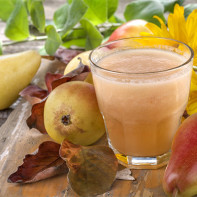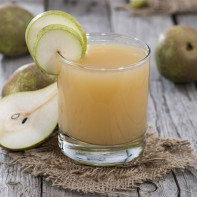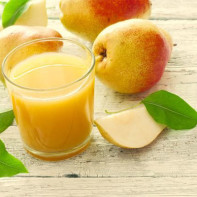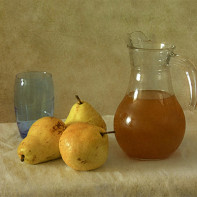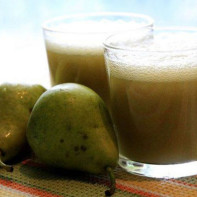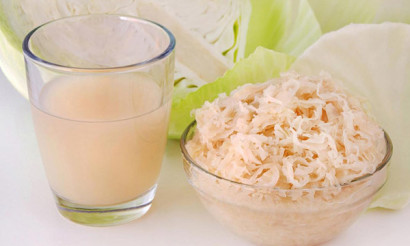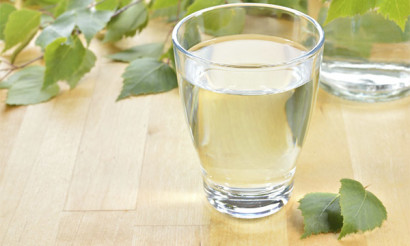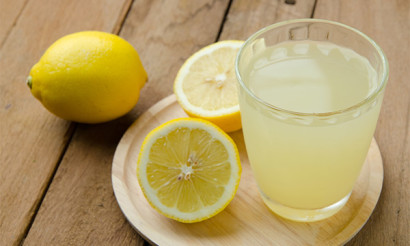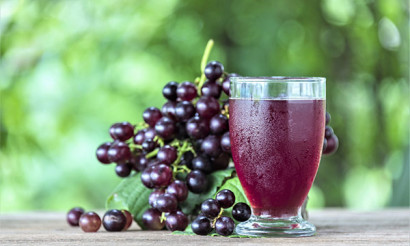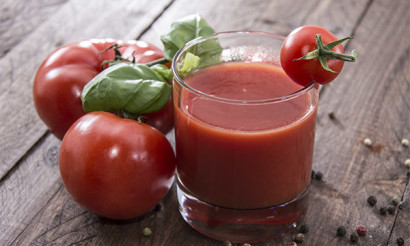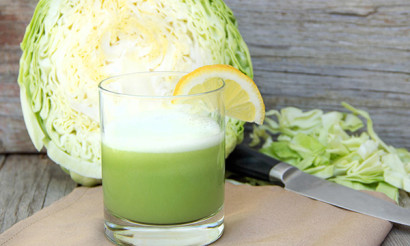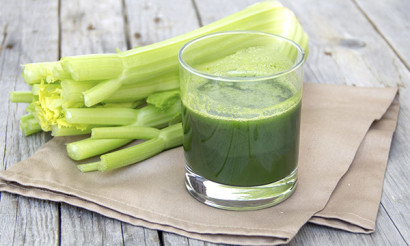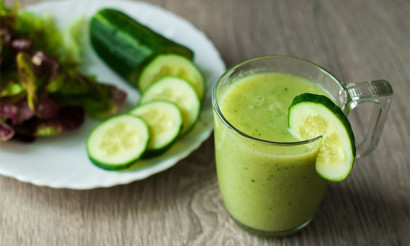Fresh pear juice: useful properties and contraindications
Pear juice is a drink made of the same name juicy and delicious fruit. Back in ancient China, pears were considered a symbol of longevity, and in ancient Greece they were sung in poems and prescribed for fevers. Yes, and in modern times, pears and sap from them are considered very useful and even curative and are actively used in folk medicine and cosmetology. Consider the benefits and harms of pear juice in detail.
- Composition and calories
- What is the usefulness of pear juice
- General benefits
- For Women
- For Men
- In Pregnancy
- Breastfeeding
- For children
- When losing weight
- Pear juice in medicine
- Pear juice for a hangover
- Harm and contraindications
- Pear juice in cosmetology
- How to Make Pear Juice: Recipes
- Classical Recipe
- Recipe in a juicer
- With Apple
- With Rowan
- With Cucumber
- How to choose pears for juice
- How to Store Pears Juice
- How to Make Pears Juice Wine
- How to Choose Store Pears Juice
- Interesting Facts about Pears
Composition and Calorie
The composition of the juice from pears is very rich in beneficial components for the human body. These are tannins and nitrogenous substances, sucrose and glucose, fiber and biotin, catechins and pectins. Of the minerals it contains the following: copper and manganese, fluorine, iodine and sulfur, nickel and zinc, iron, potassium and calcium. In terms of the content of mineral beneficial trace elements, the pear is the leader among all fruits.
The drink from pears is also rich in vitamins: A, C, P, R, K, E.
The caloric value of pear juice is 45.5 kcal per 100 grams.
What is the usefulness of pear juice
General benefits
Since pear juice is extremely rich in useful components, it is also very useful and has a positive effect on the human body.
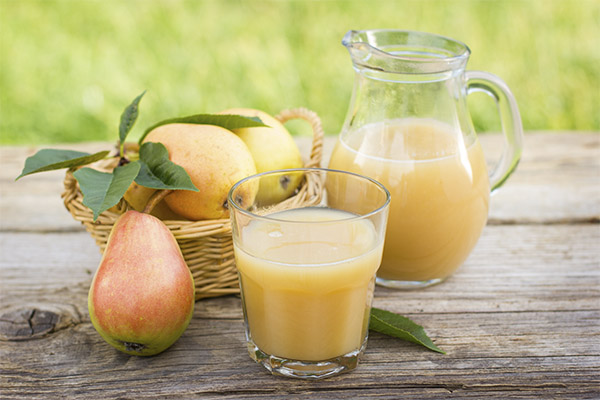
The benefits of pear juice:
- Gives a boost of energy and vitality;
- cleanses the body of toxins and carcinogens;
- beneficial effects on the gastrointestinal tract;
- Normalizes the cardiovascular system;
- Serves as an effective natural prophylactic of various intestinal infections;
- Helps in the prevention and fight cancer;
- stabilizes blood pressure;
- Supports the health of the thyroid gland;
- "monitors" the normal functioning of the genitourinary system;
- strengthens the immune system and helps the body fight viruses and bacteria.
For women
The content of vitamin E in pears makes their juice an excellent remedy for normalizing the hormonal background and easing the course of critical days. The high content of iron in this drink also relieves pain on these days. Its regular use will help in the normalization of the menstrual cycle.
For men
Antiseptic properties of ascorbic acid in the composition of pear juice help in the fight against inflammatory processes of the urogenital system, which often affect men. The constant use of pears and their juice will provide a man with effective prevention of such an unpleasant ailment as prostatitis.
When pregnant
Thanks to the sucrose and fructose in its composition, pear juice perfectly stimulates appetite, the loss of which is so often complained about by women in the first trimester of pregnancy. A couple of sips of juice can easily solve this problem.
Very helpful for pregnant women is strengthening the body and immunity, increasing its resistance to viruses and pathogens. All this gives regular consumption of pears juice.
If a woman while waiting for the baby gets sick with flu or acute respiratory infections, it is contraindicated many effective drugs. Here, too, vitamin-rich pear juice comes to the rescue, supporting the body during the disease, shortening the cure and preventing relapses.
Breastfeeding
Nursing mothers are advised by doctors to refrain from excessive consumption of pear juice. The fact is that, like any fruit, pears contain a lot of fiber, which can cause increased gas and colic in the newborn.
After consulting with a doctor, you can try to introduce juice into the diet of a woman during lactation, because both mom and her baby need a sufficient amount of vitamins. It is necessary to monitor the reaction of the baby after the first use of juice. If there were rashes or other allergic reactions, bloating or stool disorders, then mom should no longer drink juice.
For children
The pear is one of the fruits, with which the beginning of complementary feeding of babies. Introduce pear juice into the diet after the child's body has become accustomed to apples.
The optimal age for the first sampling of juice - 6 months. If a child is allergic or suffers from gastrointestinal problems, it is better to delay the test pear juice until a year.
The first times you need to give your child juice mixed with boiled water, in the amount of just one teaspoon. At one year old, your baby can drink up to 100 ml of juice per day.
Juice should be given half an hour before meals or between meals. To save tooth enamel from damage by fruit acids, you should immediately teach your baby to drink juice through a straw.
For weight loss
Pear is a fruit with low calories and has a diuretic effect. This means that the use of pear juice does not threaten with extra pounds and will get rid of edema.
Pear juice gives a feeling of fullness for a long time. In addition, it is very sweet, and thinners with a sweet tooth will appreciate it, because afterwards they will not be tempted to indulge themselves with calorie candies or cakes.
When losing weight, pears and their juice are great for snacking, perfectly combined with other fruits and berries and with fermented dairy products. For example, you can eat non-fat cottage cheese and wash it down with a glass of pear juice or make a healthy fruit smoothie.
Pear Juice in Medicine
Pear juice because of its usefulness for the human body is often used in the complex fight against various diseases.

- In people suffering from diseases of the cardiovascular system, pear juice normalizes heartbeat, strengthens the walls of blood vessels, improves blood circulation and has a positive effect on blood composition.
- Pear juice normalizes the gastrointestinal tract and improves intestinal peristalsis.
- Diuretic properties of pears help to fight urolithiasis, and anti-inflammatory property further protects against cystitis.
- Fructose is good for the thyroid gland.
- Pectins remove "bad" cholesterol from the body, which prevents the appearance of cholesterol plaques.
- The high content of antioxidants in pear juice is very relieving for poisoning. Especially pears have proven effective in neutralizing the effects of mushroom poisoning.
- For people suffering from stomach, gallbladder and liver diseases, pear juice will eliminate pain, improve health and relieve heartburn.
- The sedative properties of this useful drink are useful for depression, stress, nervous breakdowns and insomnia on this basis.
- Pear juice perfectly lowers the temperature, so it is indispensable for diseases accompanied by fever.
- Pear juice "relaxes" the stool, which helps people who suffer from occasional constipation. But in case of permanent long-term constipation, doctors do not recommend to solve this problem with juice.
- Pear juice improves capillary circulation and the walls of the capillaries themselves. This comes in handy in the fight against bronchitis and other respiratory diseases. Quickly pass wet and dry cough, sputum escapes, relieves asthmatic attacks and shortness of breath.
- The predominance of fructose over glucose makes this juice useful for diabetes and pancreatic diseases.
- Juice is indicated for people with arthritis, arthritis, osteoporosis, rheumatism. It prevents calcium leaching from bones in women during menopause.
- The fruit improves eyesight and reduces the risk of cataracts over the years.
- Additionally, pear juice improves tissue regeneration, accelerates the healing of all kinds of wounds, gets rid of dizziness, improves appetite, and reduces sensitivity to cold.
Pear juice for hangovers
According to numerous studies by scientists in different countries, pear juice is an effective remedy to alleviate the condition of people suffering from a hangover.
Juice should be consumed not when the unpleasant symptoms have already manifested themselves in full measure, but the day before, that is, before the supposed intake of alcohol. One glass of juice will be enough. It has a "magical" property of reducing the alcohol content in the blood.
The most obvious result of drinking juice is noticeable in the increase of concentration. It was this that the subjects noted in the first place. They were able to concentrate and gather their thoughts more easily.
Scientists cannot say exactly how and why pear juice has this effect on alcohol. So far, only science has been able to determine that it has something to do with the effect on enzymes and the production of enzymes that break down alcohol.
The research was done with one variety of pears, the Korean pears (the Chinese variety is similar). But it is assumed that this applies to juice from any variety.
Harms and contraindications
Although pear juice is very useful, its excessive consumption can bring harm to the body. There may be allergic reactions from an excessive amount of the drink, develop severe diarrhea, because the fiber in pears strongly weakens the stool. In addition, you can get gas, bloating and pain in the stomach.
Contraindications to drinking pear juice:
- chronic constipation;
- tendency to diarrhea;
- Chronic gastritis or peptic ulcer;
- advanced age;
- Childhood under 6 months;
- Allergies and individual intolerance;
- irritable bowel syndrome.
Pear juice in cosmetology
The useful properties of pear juice allow you to maintain youthful skin, strengthen the hair and nails. This is very noticeable when regularly consumed internally. But the use of juice has also found itself in external application in various masks for facial skin.
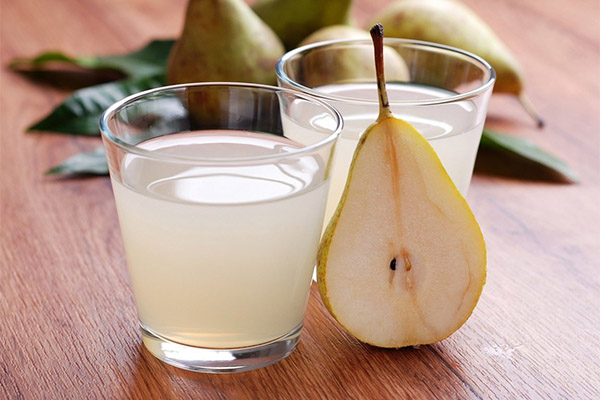
The juice is mixed and applied to the skin:
- with sour cream and almond oil for mature skin;
- With egg white for visible wrinkles;
- With lemon juice to lighten age spots;
- with fermented milk products for oily skin;
- with honey and grapefruit juice for too dry skin;
- With onions and milk for inflammations and rashes;
- with walnut oil, wheat flour and lemon for "tired", unhealthy complexions.
Already after the first use of a pear mask the effect will be noticeable. Such procedures should be done 2-3 times a week for a month. If necessary, the course can be repeated after a break of a month.
How to make pear juice: recipes
To prepare your own 100% natural and useful juice at home is not difficult. First of all, you need to thoroughly wash the fruit. Pears sold in supermarkets are often treated with chemicals, rubbed with wax, and simply contaminated. Then washed and dried pears should be peeled and cut into medium dice, removing the core with seeds.
A classic juice recipe
Slices of pears through a mincer. The resulting puree squeeze through gauze and pour into an enamel bowl. At this stage, you can sweeten the juice to taste. It is worth remembering that the pear juice itself is quite sweet. And it is better not to use sugar, preferably give preference to honey. The juice should be boiled over medium heat for about 15 minutes and then pour into sterilized jars or bottles and seal them.
Recipe in the juicer
You need to add water to a special compartment in the juicer, load the pear cubes into it and cover with a lid, turn it on. This process of making juice takes from 20 to 60 minutes, depending on how soft pears are. It is canned similarly to the previous recipe.
With apple
Apple-pear juice is prepared according to the classic pear recipe. Apples are exactly the same way chopped through a mincer, squeezed through gauze and boiled together with pears in a pot. "Standard" proportion is 2 kg of apples to 1 kg of pears, but everything can be taken solely to taste. "Average" amount of sugar for such juice - 50 g per 1 kg of fruit.
With rowanberry
Pear juice with black chokeberry has a special subtle and refined taste, it has a dark rich color, visually similar to wine.
Ingredients: for 1 kg of pears you need to take 1 kg of rowanberries and 250 g of beets, 250 g of sugar.
All fruits and vegetables are prepared in the same way: wash, peel, remove seeds, cut into cubes. Then they are passed through a juicer or meat grinder and gauze. Mix and put on the fire, boil for 5-7 minutes, then pour into containers. Cans or bottles are wrapped. In a warm place they should stand until completely cooled, then you can remove them to a place of permanent storage (for example, the cellar).
With cucumber
Ingredients:
- 1 kg pears;
- 1 kg of cucumbers;
- 100g ginger root;
- 5 stems of ginger.
The fruits and vegetables are prepared as usual. Then use a juicer or meat grinder. Such juice is not boiled, and immediately poured into jars. It does not need to be canned, it is intended for short-term consumption and can not be stored for a long time. Jars and bottles are simply closed tightly and put in the refrigerator, where they can stand for up to two weeks.
How to choose pears for juice
All varieties of pears are suitable for making juice. But the most fragrant and tasty drink is obtained from fruits with dense flesh and thin skin.
Keep in mind that to make 1 liter of juice you will need about 2 kg of fruit of medium size.
How to store pear juice
For a useful and natural self-cooked pear juice stored well, it is sterilized and rolled hot. Pasteurize it for at least 15-20 minutes.
You can store the juice in jars and bottles. Jars must be sterilized beforehand, and bottle caps should be sealed with paraffin or wax. In a dry and cool place such a preservation is easy to stand all winter. For reliability and improved storage of pear juice is often "closed" not in pure form, but with the addition of nectars of other fruits and berries.
You can make juice from pears and for short-term storage, simply by tightly closing the lid of the jar. This way they will last in the refrigerator for up to two weeks.
How to make wine from pear juice
To make wine from pear juice, you need to let it ferment. You can use fermented juice. It is better if it has pulp. You can add some mashed pears to the juice.
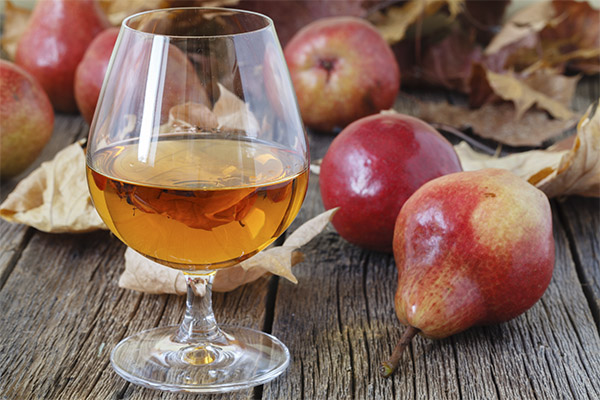
You need to add sugar and a few raisins or fresh unwashed grapes. This is necessary to activate the fermentation process. Juice with additives is covered with gauze, so that gnats and debris do not get into it.
Two to three days the juice should stand in a warm place. It is stirred periodically, dropping to the bottom of the foam and fermented berries. Foam will actively form (up to hissing) - this is a good sign that the process is correct and active. If you do not stir and do not dip the pulp in the liquid, the preparation for the wine can become sour.
After a few days, the juice is filtered through gauze or a fine sieve and poured into a container for the wine. It is necessary to leave about a quarter of the empty space, so that there is room to add sugar, foam to form and carbon dioxide to escape.
If the juice seems too cloudy, that's okay. It doesn't have to be clear. It all depends on the variety of pears and additives. You have to put a stopper with a trapdoor on the tank with the broth. But you can not buy it specially, but just wear a medical glove and make a puncture in one of the fingers with a needle. At the bottom you need to tape it firmly with rubber bands or string to the neck. There should not be any holes or gaps left, except for the one made puncture.
Now you need to move the bottle to a dark place with a temperature between 18-26 degrees Celsius and leave it there for a month or two. After five days, add a portion of sugar of 1 kg. To do this, you need to remove the odorant, drain through the tubes about half a liter of juice and dissolve the sugar in it. Pour this syrup back into the bottle.
After five days add another 1 kg of sugar. You don't need to do anything else with the wine, just wait. Sometimes the wine ferments for a very long time - about two months. In this case, after about 50 days, pour the wine into another container, separate it from the sediment, close the odour trap and leave it to "finish". This will save from a possible bitter aftertaste.
A sign that the wine has stopped fermenting is a deflated glove or the absence of bubbles in the odour trap. At this stage it is necessary to remove the sample and add sugar to taste or alcohol (vodka), so as to have a fortified wine. Then it is recommended to leave it for six months, filtering every month.
Ready pear wine can be stored in tightly corked bottles for about three years at the standard strength of 10-12%. If you add alcohol, the shelf life increases.
Important! In order for the wine not to disappear, to ferment and store normally, not to sour and not to form slime, you need acidity. For this purpose, at the first stage of wort preparation, when berries are added, you need to pour citric acid or lemon juice. The amount depends on the taste and sweetness of the pear juice.
How to choose store-bought pear juice
Store shelves are littered with bags and bottles of various juices and nectars. But are they safe to drink? And are they as good as the ones you make yourself? How do you choose a quality and natural drink?
Natural can be juice made from fruits that grow in a particular area. That is, juice from pears can theoretically be natural, since these fruits grow everywhere in Russia. Then you need to pay attention to the date of production. It should correspond to the period of harvesting. If the date is the day before last year, then the juice is clearly made from concentrate with sugar and water.
The concentrate itself is not bad, because it is condensed natural juice. But the manufacturer is obliged to indicate how much juice is in the total amount of such a reconstituted drink. And if such a figure is missing on the package, then you can safely assume that an unscrupulous manufacturer is hiding a small amount of natural juice, violating GOST. They may not even indicate water in the composition, which is impossible if the juice is reconstituted.
Nectar is juice mixed with water and sugar. In such a drink the fruit part will be the scarcest. It is necessary to pay attention to the amount of fruit fraction in the nectar: it should not be less than the legally established. For pears it is 50%.
When studying the composition, it is important to remember that flavorings, dyes, preservatives and sweeteners are prohibited. The label of a bona fide producer should contain the composition, nutritional value, calories, shelf life and storage conditions, the name of the manufacturer, his contacts, the document under which the juice was produced. The designation UHT means that the juice has been subjected to heat treatment, which extends its shelf life, but "kills" some of its nutrients.
If the juice in the glass bottle has been stored in direct sunlight, it will spoil faster than the label indicates.
Opened juice can be stored in the refrigerator for one to three days.
Interesting facts about pears

- The homeland of pears is South Asia.
- America was "introduced" to pears only 400 years ago.
- In ancient times pears were an offering to the gods.
- In ancient times pears were used to ward off seasickness during long sea voyages. A small piece of pear was simply sucked up and the seasickness disappeared.
- Pears belong to the same family of plants as apple trees, roses and rosehips.
- In ancient China, pears were considered a symbol of immortality because this tree is very strong. Finding a broken pear was a very bad omen. And if a man broke it voluntarily himself, he was signing his own death warrant.
- The wood of the pear tree is unusually strong. Rulers and other measuring instruments were made of it, as they were not deformed. Furniture made of such wood serves for centuries and retains its original appearance. And nowadays pear wood is used to make dishes that do not differ from ceramic or glass ones in the use and they can be washed even in the dishwasher. True, there is a difference - it is much more durable.
- The same Chinese believed that sharing a pear meant parting.
- Before Columbus brought tobacco, people had tried smoking other plants, one of which was pear leaves.
- The pear tree is a very capricious tree. So gardeners have come up with this trick: they graft the pear tree onto the rowan tree. Rowan is a very easy to care for and unpretentious plant. Thus, the fruit grows on the rowan, but becomes more tart.
- The leaves on the branches of a pear tree are not arranged chaotically, but in strict order, at the same distance from each other and at the same angle of 135 degrees. This way the tree gets maximum sunlight.
- Fresh pears can be stored for up to a year. For this you should choose only whole fruits and stack them in a single layer in a dark place at a temperature no higher than 0 degrees Celsius.
- Allergies to pears are most often suffered by people with an individual intolerance to pollen of alder and birch.
- There are more than 3,000 varieties of pears in total.
- In ancient Russia, instead of the word "pear" the word "dulja" was used. And in Russian writings there is a form of the word "krusha".
- The main producer of pears is China.
- In Switzerland, pears are used to make a very concentrated sweet syrup called "pear honey".
- And in Italy there is pear mustard, which is a mustard with added fruit, including pears.
- Pear wood also serves as the material for embossed boards used to make carved gingerbread.
- The world's largest pear was grown in Japan. Its weight was about 3 kg.
«Important: All information on this site is provided for informational purposes only purposes. Before applying any recommendations, please consult a specialist. specialist before you use any of the recommendations. Neither the editors nor the authors shall be liable for any possible harm caused by materials."

